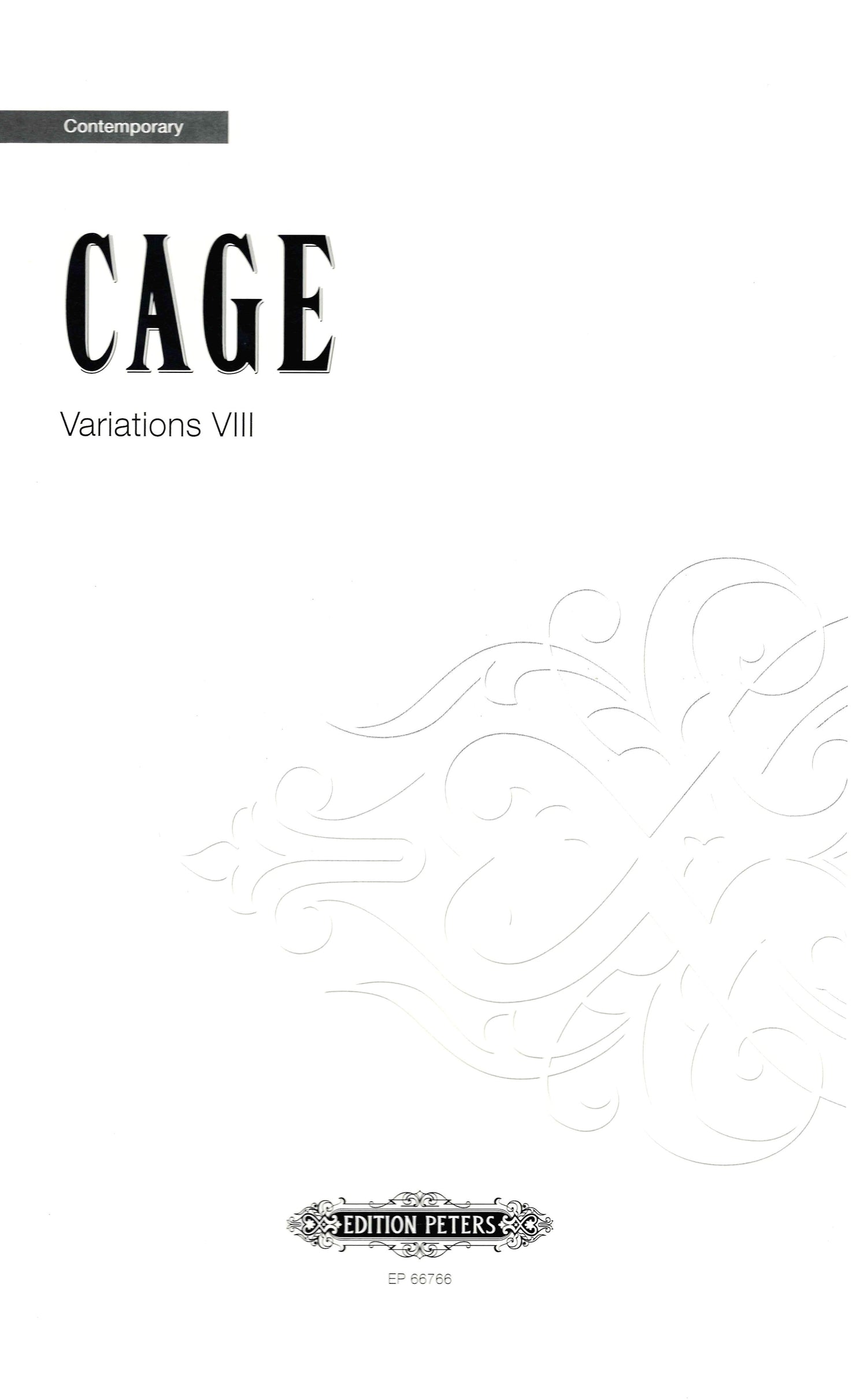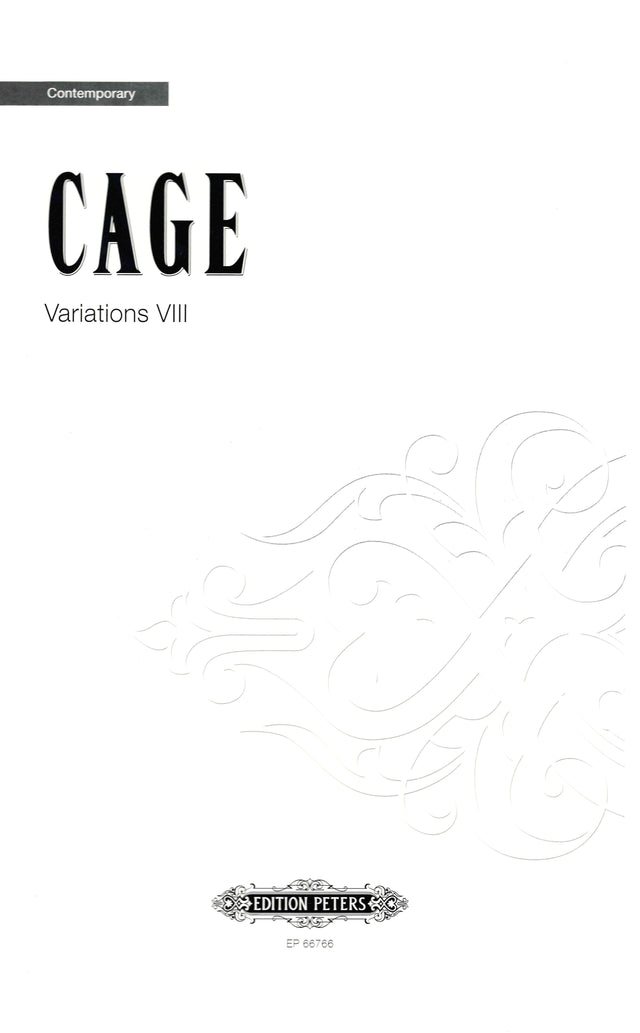John Cage
Cage: Variations VIII
- Composer: John Cage (1912-1992)
- Instrumentation (this edition): Any Instrument, Electronics
- Originally for: Any Instrument
- Work: Variations VIII (1978)
- Binding: Spiral Bound
- ISMN:
- Size: 10.8 x 16.9 inches
- Pages: 10
Description
For any number of musicians using photo-electric cells and electronic equipment.
This work is essentially a plan for finding an arrangement of a specific electro-acoustic system, in which performers are allowed to act in a free and unscripted manner. Where Variations VI was a tool for creating a sound system, here we have a tool for creating a musical score. Or, as James Pritchett puts it: "The sound system was designed with the limitation that only sounds that arose during the performance were to be used -- in other words, the performers would not make any actions to generate sounds deliberately, but rather would use technological means to discover sounds in the air "as through with a net."... ". The work was set up as a collaboration between and among artists and engineers. in it, one could hear amplified sounds of the heart, lungs, brain, and other body parts, as well as Geiger counters, radios, televisions, telephones, etc. Performance engineer: Cecil Coker. Grateful acknowledgment was made by Cage for the cooperation of: Merce Cunningham Dance Foundation, Luchow's Restaurant, A.S.P.C.A., The New York Times, The City of N.Y., Terry Riley, Robert Wood, Richard Hennessy, and Rubin Gorowtiz. in the souvenir program provided at the first performance, Cage wrote the following statement: "My project is simple to describe. It is a piece of music, Variation VII, indeterminate in form and detail, making use of the sound system which has been devised collectively for this festival, further making use of modulation means organized by David Tudor, using as sound sources only those sounds which are in the air at the moment of performance, picked up via the communication bands, telephone lines, microphones together with, instead of musical instruments, a variety of household appliances and frequency generators. The technical problems involved in any single project tend to reduce the impact of the original idea, but in being solved they produce a situation different than anyone could have pre-imagined."
Publishers use a lot of words to describe what they sell, and we know it can be confusing. We've tried to be as clear as possible to make sure you get exactly what you are looking for. Below are descriptions of the terms that we use to describe the various formats that music often comes in.
Choral Score
A score for vocalists that only contains the vocal lines. The instrumental parts are not there for reference. Generally, cheaper than a vocal score and requires multiple copies for purchase.
Facsimile
Reproductions of the original hand-written scores from the composer.
Full Score
For ensemble music, this indicates that the edition contains all parts on a single system (there are not separate parts for each player). In larger ensembles, this is for the conductor.
Hardcover
Hardbound. Generally either linen-covered or half-leather.
Orchestral Parts
Similar to a wind set, this is a collection of parts. In the case of strings, the numbers listed are the number of copies included, though generally these are available individually (often with minimum quantities required).
Paperback
When publishers offer multiple bindings (e.g. hardcover) or study scores, this is the "standard" version. If you're planning to play the music, this is probably what you want.
Performance / Playing Score
A score of the music containing all parts on one system, intended for players to share. There are not separate parts for each player.
Set of Parts
For ensemble music, this indicates that there are separate individual parts for each player.
Solo Part with Piano Reduction
For solo pieces with orchestra, this is a version that contains a piano reduction of the orchestra parts. For piano pieces, two copies are typically needed for performance.
Study Score
A small (think choral size) copy of the complete score meant for studying, and not playing. They make great add-ons when learning concertos and small chamber works.
Vocal Score
A score prepared for vocalists that includes the piano/organ part or a reduction of the instrumental parts.
Wind Set
For orchestral music, this is a collection of wind and percussion parts. The specific quantities of each instrument are notated.
With Audio
In addition to the printed music, the edition contains recordings of the pieces. This may be an included CD, or access to files on the internet.
With / Without Fingering (Markings)
Some publishers prepare two copies - a pure Urtext edition that includes no fingering (or bowing) suggestions and a lightly edited version that includes a minimal number of editorial markings.




